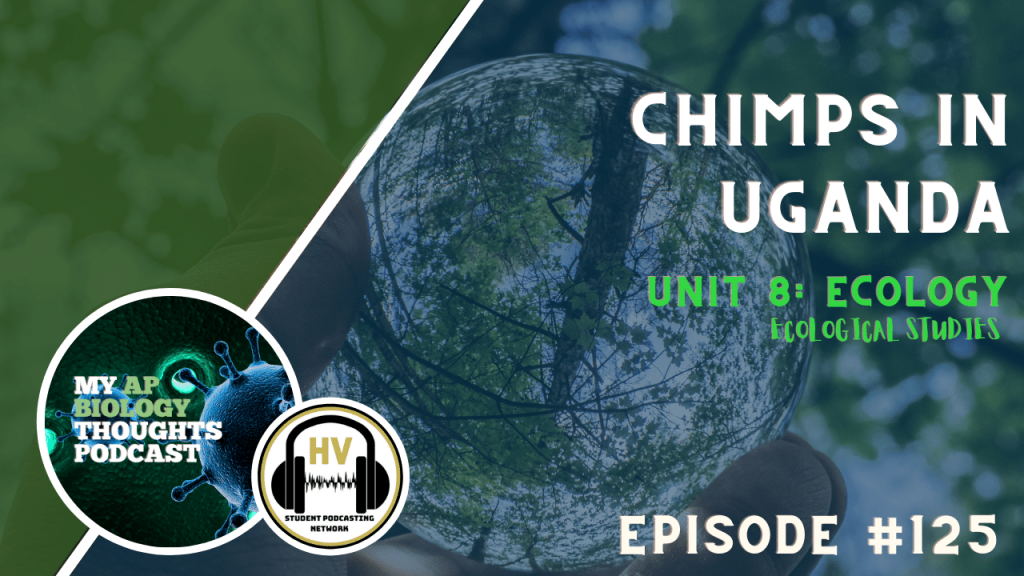Chimps in Uganda

My AP Biology Thoughts
Unit 8 Ecology
EPISODE TITLE: Chimps in Uganda
Welcome to My AP Biology Thoughts podcast, my name is kyle along with my handsome cohosts Shrithik, saahtih and gabe and we are your hosts for this episode , Unit 8 Ecology-Chimps in Uganda. Today we will be discussing Chimps and how they relate to the AP Biology Curriculum.
Segment 1: Overview of CHIMPS
- Chimps in Uganda
- 98% share dna with humans
- They move around and live in communities of individuals similar to humans
- Don’t travel in groups like gorillas or other monkeys
- Around 1500 chimps in uganda live in 13 different communities inside the khabale forest with 5000 total in the country
- Type 1 survivorship rate
- K-selected species
Segment 2: Evidence that supports CHIMPS
“You can also track chimps in Kyambura Gorge, Kalinzu Forest, Budongo Forest and in the Semliki Valley. Most of our Uganda holidays focus on Kibale, which has a very high success rate for sightings, and the atmospheric Kyambura Gorge in Queen Elizabeth National Park, where sightings are less certain but the scenery is spectacular.”
- People have the hobby of following the chimps
- Watching these communities shows the similarities of our survivorship and how they are K selected –
- K selected mean long term babies taking care of infants
- Type 1 species
- Population growth (exponential vs logarithmic)
- Natural limiting factors of population – Habitat loss, leopards
- How human activity affects chimp population – Hunting for bushmeat, pet trade and poaching and deforestation
Segment 3: Connection to the Course
- These chimps relate to topic 8.3, population ecology in the AP biology curriculum.
- The chimps provide an example of organisms changing in order to respond to their environment as they have opposable thumbs like humans in order to help grasp and climb trees which indirectly helps them obtain energy
- The fact that the chimps have large group sizes, small body sizes and dietary flexibility increases their adaptive capacity to contribute to the success of their population in their habitat.
- The chimps eat figs, fruits, nuts, insects and even bark
Thank you for listening to this episode of My AP Biology Thoughts. And another thanks to our sources, lonely plant.com, responsible travel, and worldwildlife.com. For more student-ran podcasts and digital content, make sure that you visit www.hvspn.com. And that’s all folks and remember keep yo pimps close keep your chimps closer.
Music Credits:
- “Ice Flow” Kevin MacLeod (incompetech.com)
- Licensed under Creative Commons: By Attribution 4.0 License
- http://creativecommons.org/licenses/by/4.0/
Subscribe to our Podcast
Connect with us on Social Media
Twitter @thehvspn

